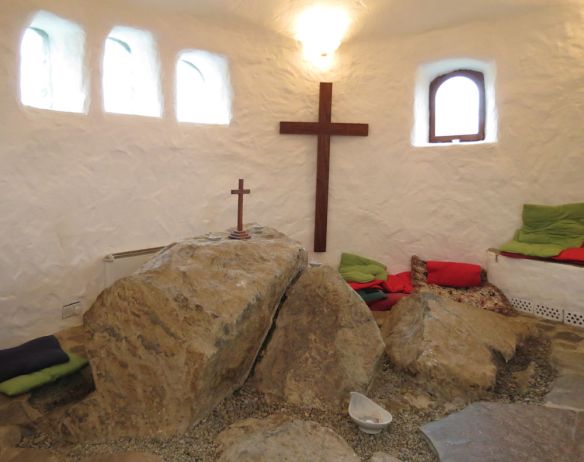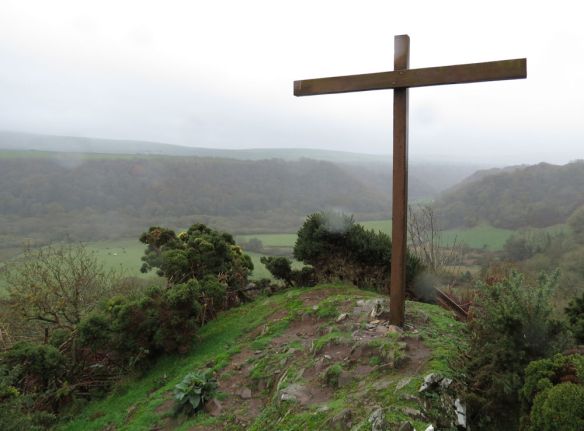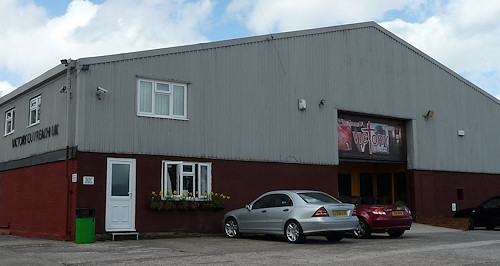I was sitting in the chapel at Ffald-y-Brenin, when I began to wonder how the rocks in it – which are such a striking and unusual feature – arrived there in the first place. The door and windows were far too small, and I couldn’t see any cut marks on the stone. Perhaps the boulders were dragged into place and then built around? But as the chapel has an ancient feel to it, I was particularly puzzled, and was intrigued to find out more.
The chapel was actually built fairly recently, around 1987. When the ground was being levelled and cleared, it was discovered that the large rocks were not boulders that could be shifted, but part of the bedrock of the hill itself. They considered blasting it with dynamite, but then decided to make the rocks a feature instead. In this they were completely successful! While in the chapel it is not hard to think of scriptures like Psalm 62:
Truly my soul finds rest in God;
my salvation comes from him.
Truly he is my rock and my salvation;
he is my fortress, I will never be shaken.
In Celtic spirituality, there is a concept of ‘thin places’, where the veil between Earth and Heaven appears to be very thin. Frankly, I was sceptical about this and wasn’t sure that such places existed. However, the chapel at Ffald-y-Brenin is one: it’s a place where it feels easy to rest in God’s presence while there.
But there is a place close by where the veil is even thinner: this is the High Cross. I went with some scepticism but was unexpectedly amazed by the experience there – even though it was a damp, grey day! It’s quite hard to explain what it felt it like there: I’ve been on enough hilltops and seen enough views to know that this was not a case of ‘Wow, what a view’, but really felt that the Celtic concept of a thin place was highly applicable.
The warden at Ffald-y-Brenin, Roy Godwin, describes the placement of the cross in his book, ‘The Grace Outpouring’. While praying one day in 2004 he had a vision from God of a cross that was to placed at a particular spot. He asked the groundsman, who strongly objected that the location was solid rock, and set out to prove the point. Instead the ground gave way at the exact point Roy had specified, and the groundsman extracted a cone of rock that left a ready-made hole in which to insert the cross.
The High Cross also seems to reinforce the ‘rock’ theme of Ffald-y-Brenin: the solid bedrock in the chapel and at the outcrop graphically symbolises the steadfastness and trustworthiness of God – but the God of the cross is sovereign even over seemingly impenetrable geology.
Had the weather not been so grim I would have lingered longer – but I am hoping to return there with Jen in the new year!





